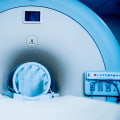Medical imaging has transformed modern healthcare by enabling doctors to visualize internal structures of the body with remarkable accuracy, aiding in the diagnosis, monitoring, and treatment of countless conditions. From X-rays and CT scans to mammograms and nuclear medicine, these imaging tests rely on radiation to produce detailed images that guide clinical decision-making. While the benefits of radiation-based imaging are substantial, it is equally important to recognize the risks involved, particularly with repeated or high-dose exposure. By weighing these advantages and potential drawbacks, patients and healthcare providers can make informed decisions that balance diagnostic value with safety.
Benefits of Radiation in Medical Imaging
The primary benefit of radiation in medical imaging is its ability to provide non-invasive, detailed visualization of the body’s internal structures. Imaging technologies such as CT scans and X-rays allow physicians to detect fractures, tumors, infections, and vascular abnormalities without the need for exploratory surgery. This speeds up diagnosis, improves treatment planning, and often leads to better patient outcomes. Radiation imaging also plays a vital role in preventive care—for instance, mammograms can detect breast cancer in its earliest stages, significantly improving survival rates. In emergency medicine, rapid imaging is often lifesaving, helping doctors assess trauma or internal bleeding within minutes.
Supporting Precision in Treatment
Beyond diagnosis, radiation imaging also enhances the precision of medical treatments. For example, CT and MRI scans are often used to guide surgical procedures, ensuring accuracy and reducing the likelihood of complications. In oncology, imaging is essential for planning and monitoring radiation therapy, allowing doctors to target cancerous tissue while minimizing damage to surrounding healthy cells. By providing a clear roadmap, these imaging tools enable healthcare teams to deliver more effective and safer interventions.
Risks of Radiation Exposure
Despite its many benefits, radiation in medical imaging does come with risks. The most common concern is the cumulative effect of radiation exposure, which can increase the lifetime risk of developing cancer. Although the doses used in most imaging tests are relatively low, repeated exposure over time can add up, especially for patients with chronic conditions requiring ongoing monitoring. Children and pregnant women are particularly vulnerable, as their tissues are more sensitive to radiation. Additionally, unnecessary imaging—such as duplicate tests—can expose patients to avoidable risks without adding diagnostic value.
Balancing Safety and Diagnostic Value
Healthcare providers play a critical role in minimizing risks while maximizing the benefits of imaging. Strategies include using the lowest possible radiation dose for accurate results, tailoring imaging protocols to individual patients, and exploring alternative methods such as ultrasound or MRI when appropriate. Patients, too, can contribute by keeping records of past imaging tests and discussing the necessity of each new scan with their doctor. Much like the careful and patient-centered approach offered at CT Cluj - Diagnostic Center, responsible use of radiation ensures that patients receive the diagnostic insights they need without unnecessary exposure.
Conclusion
Radiation in medical imaging tests offers undeniable benefits, from accurate diagnosis and early detection to guiding treatment and improving outcomes. However, these advantages must always be balanced against the potential risks of radiation exposure. By applying safety measures, tailoring imaging to patient needs, and avoiding unnecessary tests, healthcare providers can harness the power of radiation while protecting long-term health. Ultimately, informed decision-making and careful use of imaging technologies ensure that patients reap the life-saving benefits while minimizing the risks associated with radiation.






